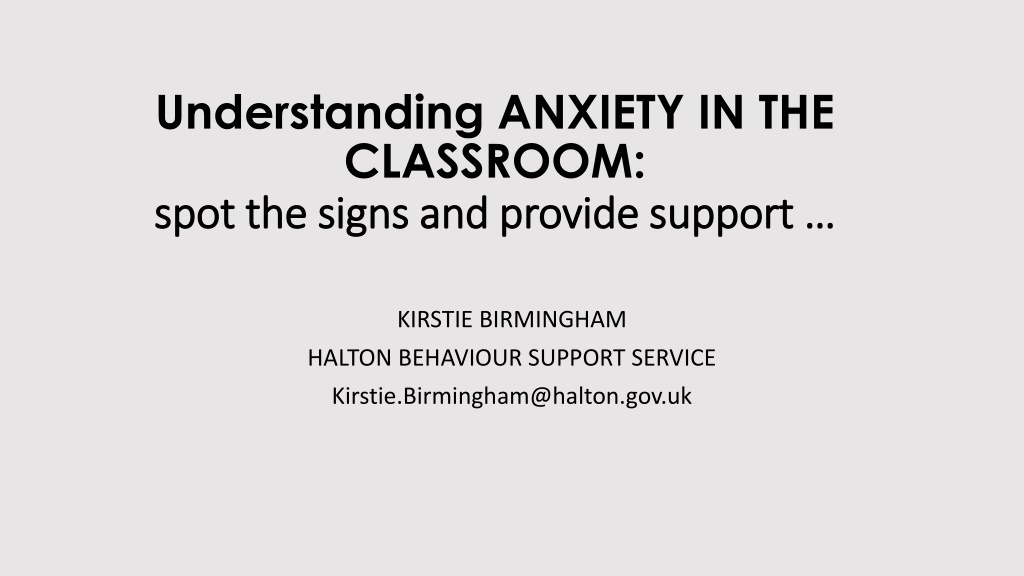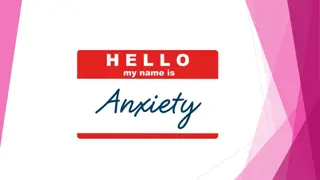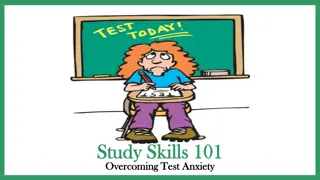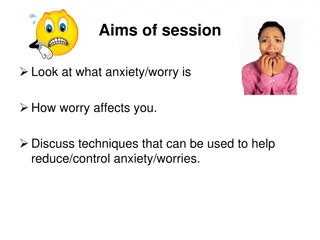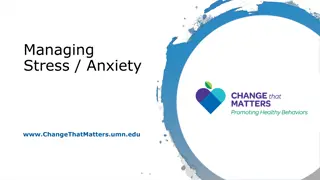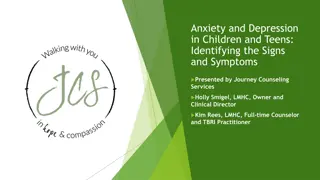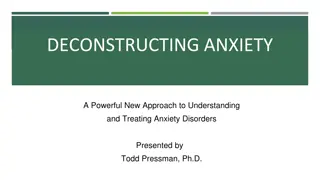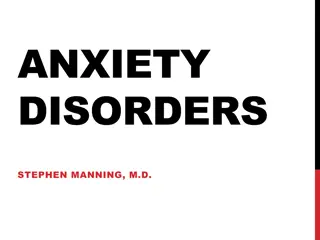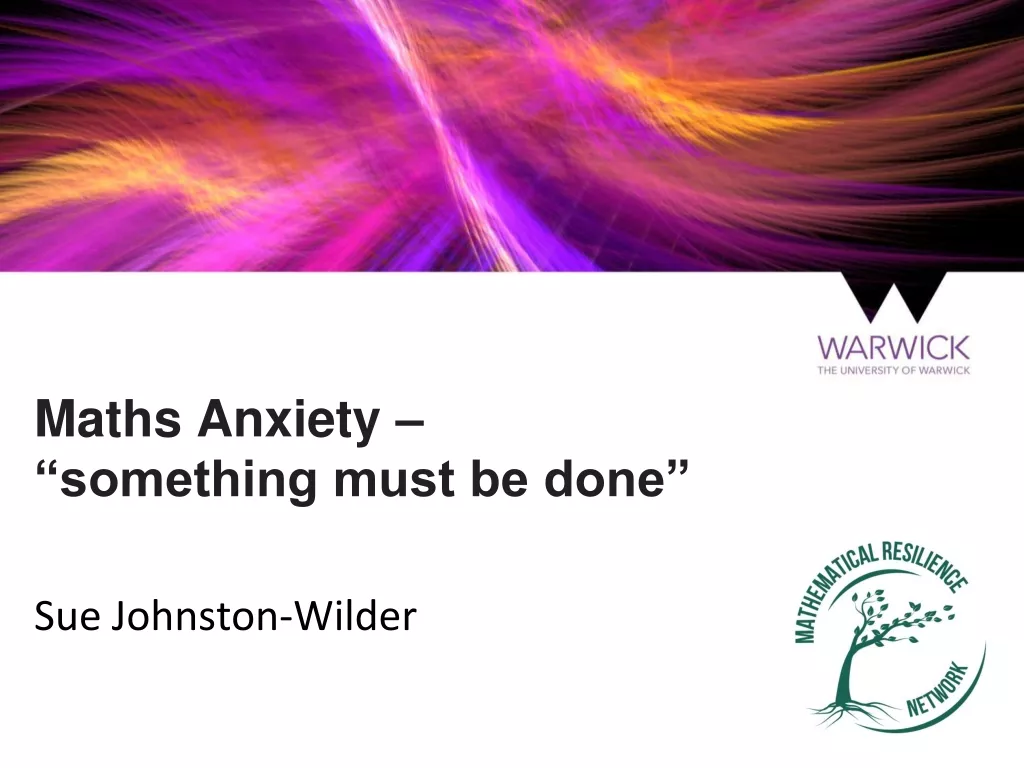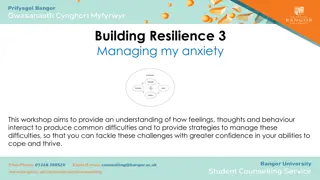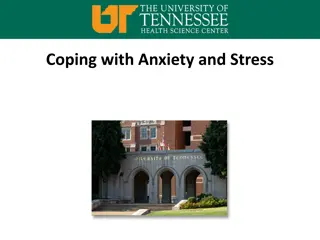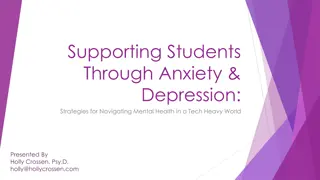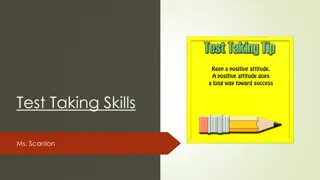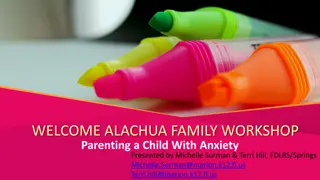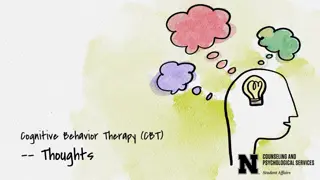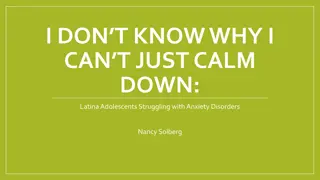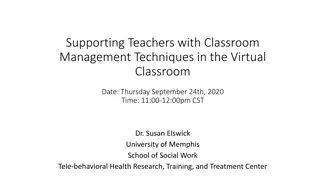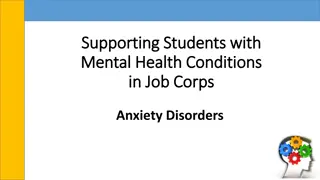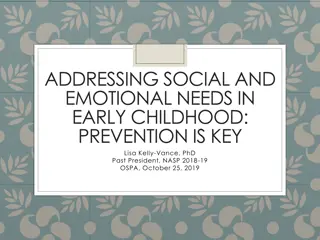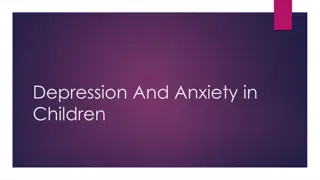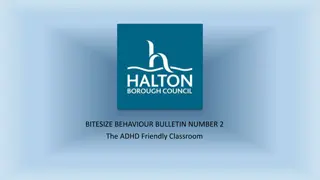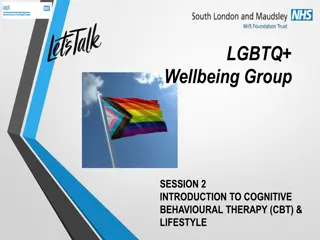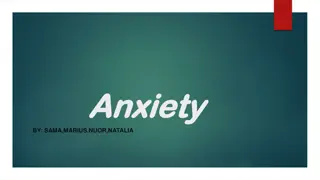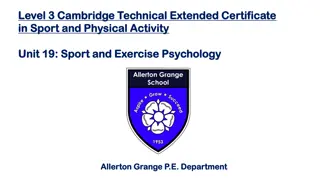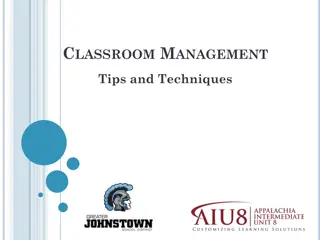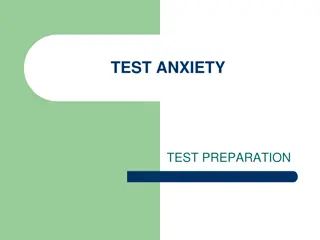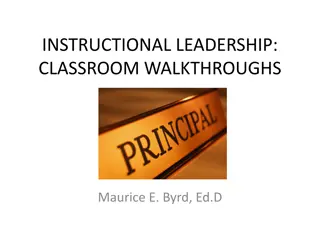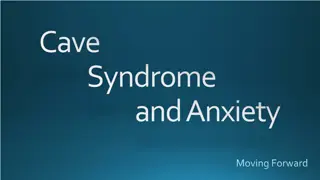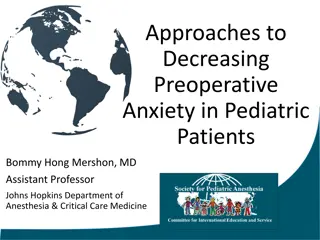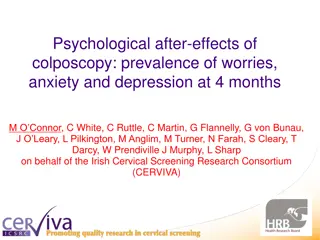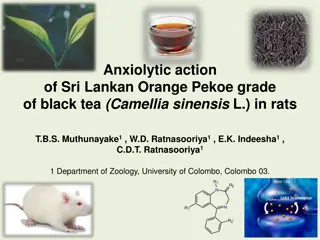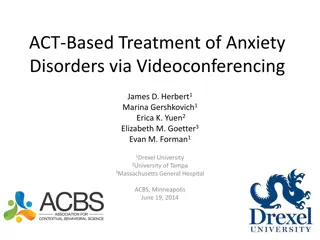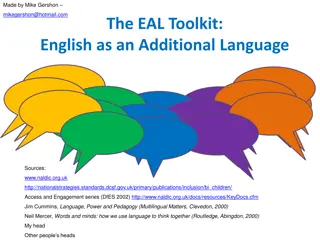Recognizing and Supporting Anxiety in the Classroom
Understanding anxiety in the classroom is crucial for providing appropriate support to students. This article discusses the signs and symptoms of anxiety, how it can manifest in educational settings, and strategies for helping students cope. It also highlights the importance of early intervention and provides resources for seeking assistance.
Download Presentation

Please find below an Image/Link to download the presentation.
The content on the website is provided AS IS for your information and personal use only. It may not be sold, licensed, or shared on other websites without obtaining consent from the author. Download presentation by click this link. If you encounter any issues during the download, it is possible that the publisher has removed the file from their server.
E N D
Presentation Transcript
Understanding ANXIETY IN THE CLASSROOM: spot the signs and provide support spot the signs and provide support KIRSTIE BIRMINGHAM HALTON BEHAVIOUR SUPPORT SERVICE Kirstie.Birmingham@halton.gov.uk
Overview Difference between normal anxious and anxiety What can cause it? Look at the stress bucket video Signs and symptoms How it presents in the classroom and activity- what can we do? Responding to anxiety and supporting with a panic attack Sign-posting for help- websites for child/parent, professional help GP CAMHS school nurse, treatments talk therapy, self-help strategies, CBT, counselling, meds, apps/chat forums
What it looks like, and why it's often mistaken for something else Anxiety in the classroom can look like something else entirely an upset stomach, disruptive or angry behaviour, ADHD, distress, unwilling to engage or even an additional learning need that may not be identified. Sometimes anxiety is easy to identify like when a child is feeling nervous before a test at school. This is normal and will pass. When feelings of anxiety disrupt a child s ability to function, this is when it becomes a problem. Doesn t pass and without the right understanding and support, could lead to frequent absence, a lack of engagement in the learning process and eventually school refusal. Early intervention is key.
Possible causes of anxiety Add stress bucket video Activity for delegates
PHYSICAL SIGNS Cardiovascular- palpitations, chest pain, rapid heart beat and flushing Respiratory- hyperventilation and shortness of breath Neurological- dizziness, headache, sweating PSYCHOLOGICAL SIGNS Avoidance of situations Repetitive compulsive behaviour e.g checking Distress in social situations Urges to escape Obsession with their appearance Mood swings Seeking approval/reaassurance BEHAVIOURAL SIGNS
How does it affect a child? PHYSICAL SYMPTOMS: Palpitations, chest pain, rapid heart beat and flushing Breathing problems and hyperventilation Dizziness, headache, sweating, tingling and numbness Nausea, vomiting, diarrhoea and stomach cramps Muscle aches and pains- neck, shoulders and lower back PSYCHOLOGICAL SYMPTOMS: Unrealistic and excessive fear and worry Mind racing and going blank Decreased concentration and memory Difficulty making decisions Irritability, impatience and anger Confusion Feeling on edge or over nervous Tiredness, sleep issues Unpleasant repetitive thoughts BEHAVIOURAL SYMPTOMS: Avoidance of situations Repetitive compulsive behaviour e.g checking Distress in social situations Urges to escape situations that cause discomfort
Children can struggle with different types of anxiety: Generalised anxiety: Generalised anxiety: When children worry about a wide variety of everyday things. Children with generalised anxiety may worry particularly about school performance and can struggle with perfectionism. May lead to them missing deadlines Separation anxiety: Separation anxiety: When children are worried about being away from their main carer. These children can have a hard time at school drop-offs and throughout the day. Social anxiety: Social anxiety: When children are exceptionally self-conscious, making it difficult for them to participate in class and socialise with peers. Be aware of underlying bullying here too. Selective mutism: Selective mutism: When children almost freeze in some situations and are unable to verbally communicate. For example, at school around the teacher or in whole- class situations or with some teaching staff. Obsessive Obsessive- -compulsive disorder: compulsive disorder: When children s minds are filled with unwanted and stressful thoughts. Children with OCD try to alleviate their anxiety by performing compulsive rituals like counting or washing their hands. Specific phobias: Specific phobias: When children have a excessive or irrational fear of particular things, like being afraid of animals or storms. Remember it is not irrational to them.
Inattentive/restless behaviours Disruptive behaviour to gain attention or spoil the flow of the lesson Complaining of illness/needing to go to the toilet Not engaging in the learning Defiance/ angry outbursts Absconding from the learning area Attendance issues BEHAVIOURS Worry associated with aspects of the lesson Reading out loud, completing the independent task, answering a question, unable to communicate issue, equipment environment factors, the structure of the lesson Genuine issues with concentration Other worries, friendship problems, family concerns, other influences not entirely obvious Other additional needs that are undiagnosed/not being met (learning, health, basic needs? Change of routine since lockdown. Actually preferred the lockdown schooling Strong attachment to parents and family environment some children don t feel as secure in school as they do at home Preoccupied with family concerns Possible Causes
Practical Ways to Help Have a supportive conversation with the child. Remember non- judgemental listening and body language Remember to ask open questions and don t over talk. Choose time and place for this and consider the child s dignity. Say what you ve noticed (the behaviours) in a calm and kind manner and utter the words you want to help Professional kindness. Explore what is causing the anxiety/stress/worry/upset /feelings Ask if there is anything that can be done to help? The child may already have a solution. Ask if they would like anyone else present with them particularly if they are struggling to open up. Ask if this happens in other lessons or situations. Be proactive and act early rather than too late. Don t allow the behaviours to get out of hand and become a coping strategy for the child which could lead to other issues.
Applying what we have learnt With your break out group, read the case study and discuss/respond to it by answering the following questions: 1. What signs and symptoms is the child displaying 2. How do you approach and support? 3. What follow-up support could you implement?
When your child is in the middle of a very anxious moment, they may feel frightened, agitated or worried about having a panic attack. The important thing to do in the moment is to help them calm down and feel safe. These strategies can help: Breathe slowly and deeply together. You can count slowly to five as you breathe in, and then five as you breathe out. If this is too much, try starting with shorter counts. If it works for them, gradually encourage your child to breathe out for one or two counts longer than they breathe in, as this can help their body relax. Sit with them and offer calm physical reassurance. Feeling you nearby, or holding your hand or having a cuddle if it s possible, can be soothing. Reassure them that the anxiety will pass and that they will be okay. It can be helpful to describe it as a wave that they can ride or surf until it peaks, breaks and gets smaller. Ask them to think of a safe and relaxing place or person in their mind. If you haven t tried this before, agree with them when they re feeling calm what this place or person is. It could be their bedroom, a grandparent s house, a favourite place in nature or somewhere they ve been on holiday. Sometimes holding a memento of a relaxing place, like a seashell or pebble, can help. Try using all five senses together. Connecting with what they can see, touch, hear, smell and taste can bring them closer to the present moment and reduce the intensity of their anxiety. You might think together about five things they can see, four things they can touch, three things they can hear, two things they can smell and one thing they can taste. Encourage them to do something that helps them to feel calmer. This could be running, walking, listening to music, painting, drawing or colouring-in, writing in a journal, watching a favourite film or reading a favourite book. Remember that everyone is different, and that over time you and the children in your care can work together to find the things that work best for them in these moments.
